A spring of eclipses

Source gallica.bnf.fr/Bibliothèque nationale de France
This year, the month of March brings two eclipses: a lunar eclipse on 14 March 2025, which will unfortunately be largely missed in this part of the world, and a partial solar eclipse roughly two weeks later on 29 March. The fact that these two eclipses occur just two weeks apart is due to the orbits and motions of the Earth and Moon.
The dance of the eclipses
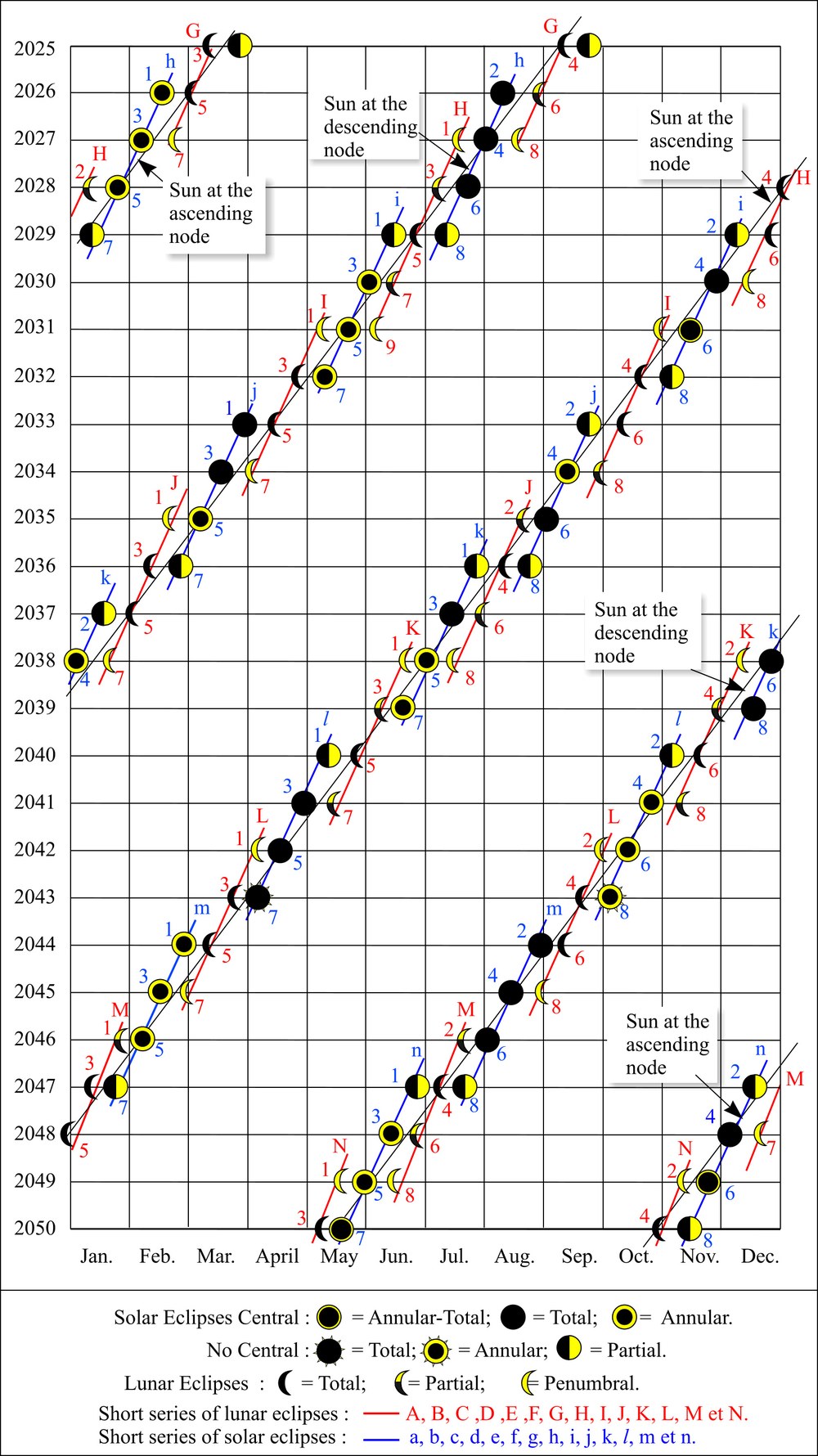
Patrick Rocher
Before exploring these upcoming celestial spectacles further, let's briefly review some basic principles. A lunar eclipse occurs when the full Moon passes wholly or partially through Earth's umbra and penumbra. A solar eclipse occurs when the Sun is fully or partially obscured by the new Moon passing in front of it – either fully, annularly (leaving a ring of sunlight around the Moon), or partially, when the Moon crosses the Sun off-centre.
Crucially, Earth's companion must be near one of the two nodes of its orbit – the ascending or descending node – at the time of either a full or new Moon. These nodes are points where the Moon’s orbital plane intersects with Earth’s orbital plane, which are tilted relative to one another. Due to this inclination, eclipses do not occur at every full or new Moon, but only roughly twice a year.
As early as the second to first millennium BCE, Mesopotamian cultures knew that eclipses of a similar kind repeat after 6585 days and one third of a day – a period later named a 'Saros' by the English astronomer Edmond Halley (1656–1742) in a paper published in 1686. With meticulous mathematical precision, Johann Theodor Oppolzer (1841–1886), among others, recorded in his work 'Canon of Eclipses' the course of approximately 8000 solar and 5200 lunar eclipses over more than 3300 years.
The interval between two successive eclipses – solar to lunar or vice versa – is typically 14 to 15 days. Given that an eclipse can only occur within a window of roughly 35 days when the Moon is near an orbital node, it is clear that in this time at least two, and occasionally three eclipses (for example, on days 3, 17 and 32) may occur, but never four. Around half a year later, when the Moon reaches the opposite node, another eclipse cycle begins. Due to the shorter lunar year, eclipse seasons arrive around eleven days earlier each year.
When and where the last full Moon of winter 2025 turns red
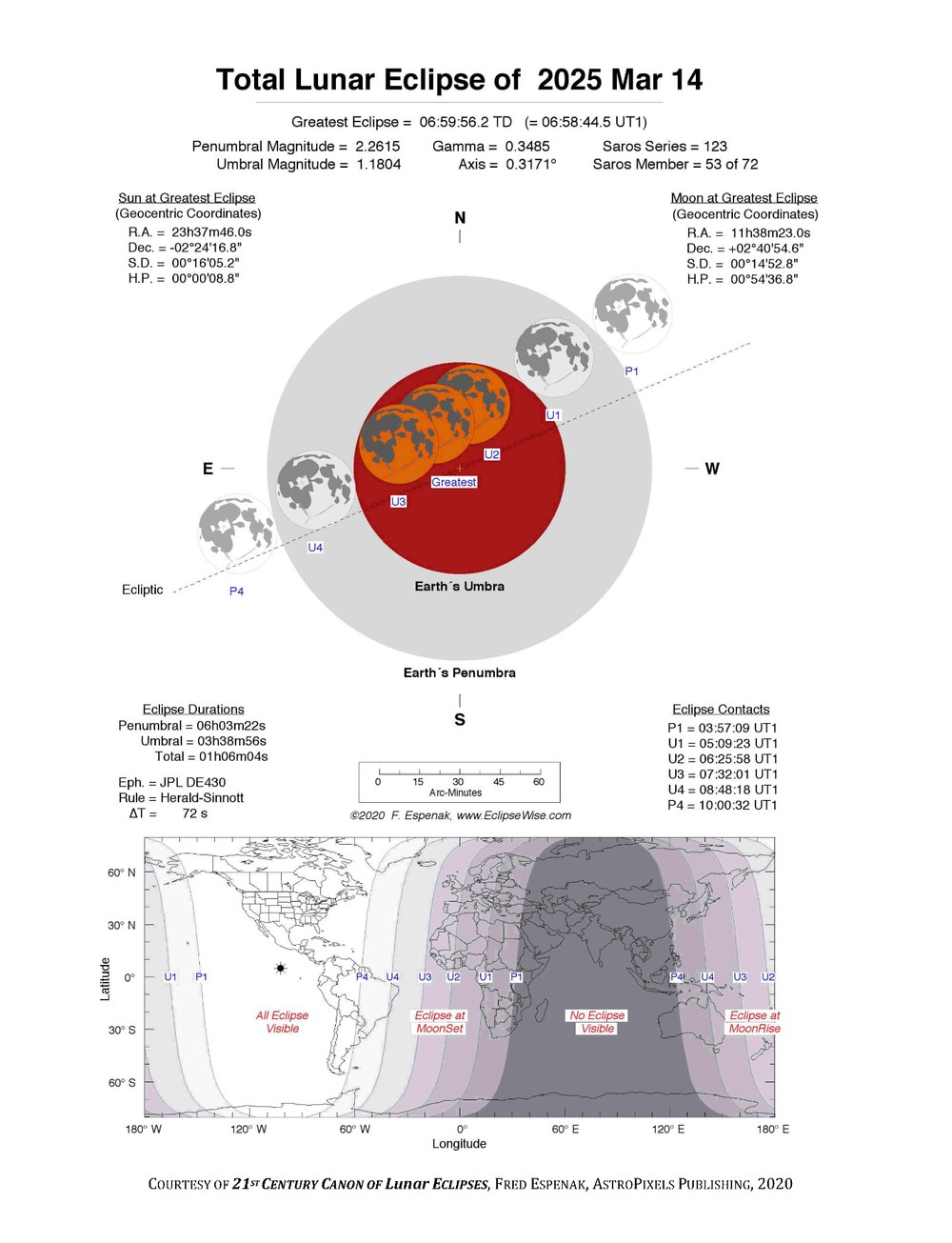
Eclipse Predictions by Fred Espenak, www.EclipseWise.com
Observers hoping to see the lunar eclipse on 14 March will need to rise early. At 04:56 Central European Time (CET), the Moon will begin moving into Earth's penumbra in a subtle and barely perceptible fashion. An hour and a quarter later, at 06:09, the full Moon will gradually enter Earth's umbra. The total phase – during which the fully eclipsed Moon takes on a reddish-brown hue due to sunlight filtering through Earth's atmosphere – starts at 07:26 and ends at 08:32. However, as the Moon sets in Germany at 06:40, the total phase will be hidden from view. At best, observers here may catch a glimpse of a partially eclipsed Moon setting near the horizon, provided the sky is clear and unobstructed.
The farther west one travels – such as to Scotland, Ireland, Portugal or the Canary Islands – the more fully the eclipse will be visible. Observers in Iceland and the Azores will witness the entire total phase from beginning to end. The best conditions for observing the complete lunar eclipse will be found in the northern and western regions of South America. The event will also be streamed live from these locations. The next lunar eclipse, on 7 September 2025, will offer slightly better viewing conditions for observers in Germany.
Partial solar eclipse on 29 March 2025
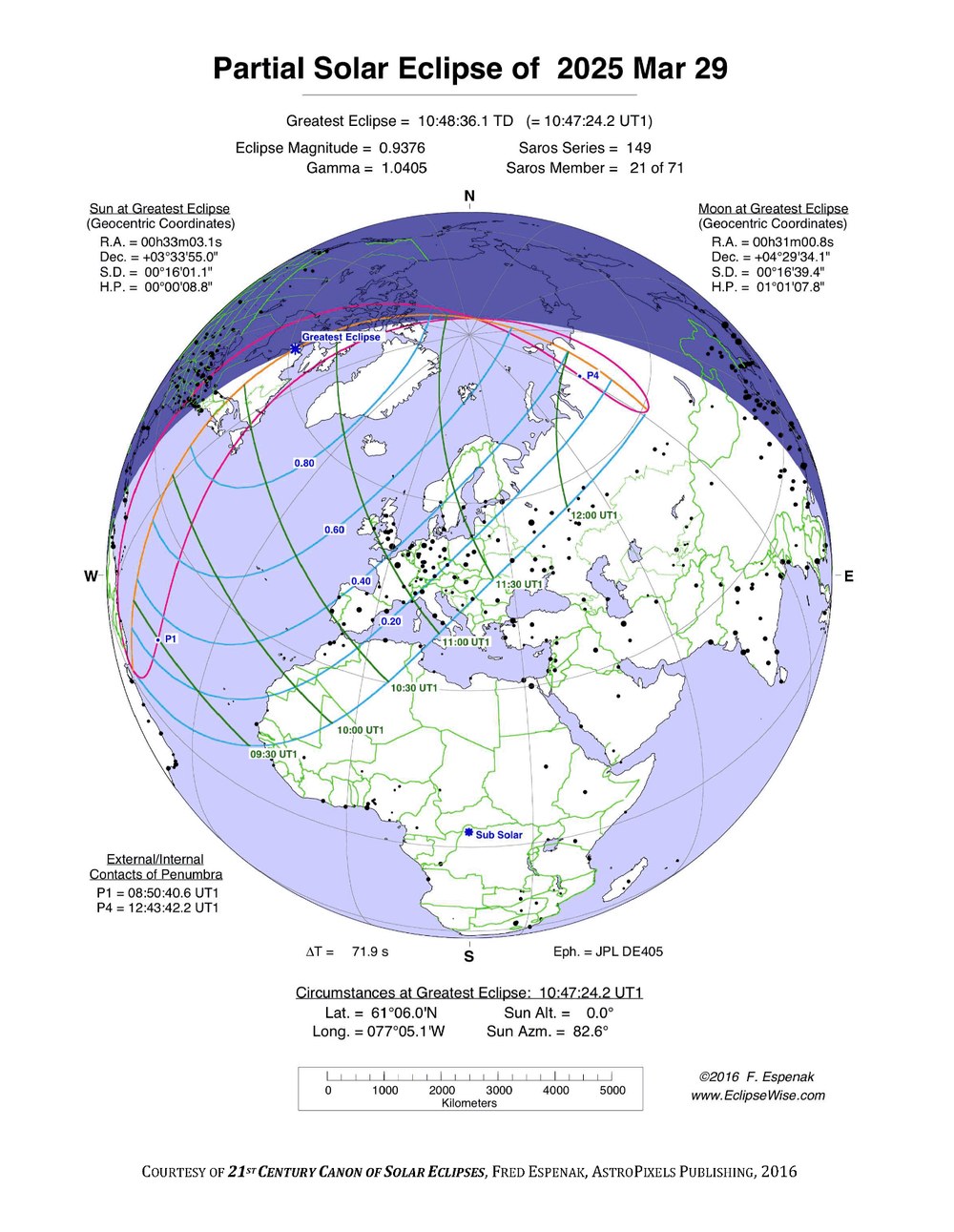
Eclipse Predictions by Fred Espenak, www.EclipseWise.com
As if a gift from the heavens, a partial solar eclipse will occur around midday on the second calendar day of the Germany-wide 'Space Day'. This eclipse is the 21st in solar Saros cycle no. 149, which began on 21 August 1664 in the northern polar region with a partial eclipse and will conclude with a similar eclipse over Antarctica on 28 September 2926.
Within this span of 1262 years, Saros cycle 149 will comprise 21 partial eclipses, followed by 17 total eclipses, then three hybrid (annular-total) eclipses and 23 purely annular eclipses. The cycle concludes with another seven partial eclipses. The eclipse on 29 March 2025 is therefore the final partial eclipse before the cycle transitions into a series of total eclipses beginning in 2043.
Its path of visibility begins along a boundary stretching from northwest Africa to central Russia, with the percentage of the Sun's disc obscured gradually increasing northwest from this line. In Germany, the degree of the Sun's disc obscured by the Moon increases from 11 percent in Munich to approximately 25 percent on the North and East Frisian Islands. Cologne and Bonn will experience approximately 20 percent coverage, with the Sun reaching an altitude of over 40 degrees by midday.
Note − protect your eyes!
When observing the partially eclipsed midday Sun, it is crucial to protect your eyes by using certified solar eclipse glasses – commonly known as solar viewers – to prevent serious eye damage. Under no circumstances should these glasses be used when looking through binoculars or telescopes: they are not designed to withstand the concentrated heat at the eyepiece and lack the structural stability for this purpose. Instead, larger protective films or filters must be securely attached to the lens of any optical instrument.
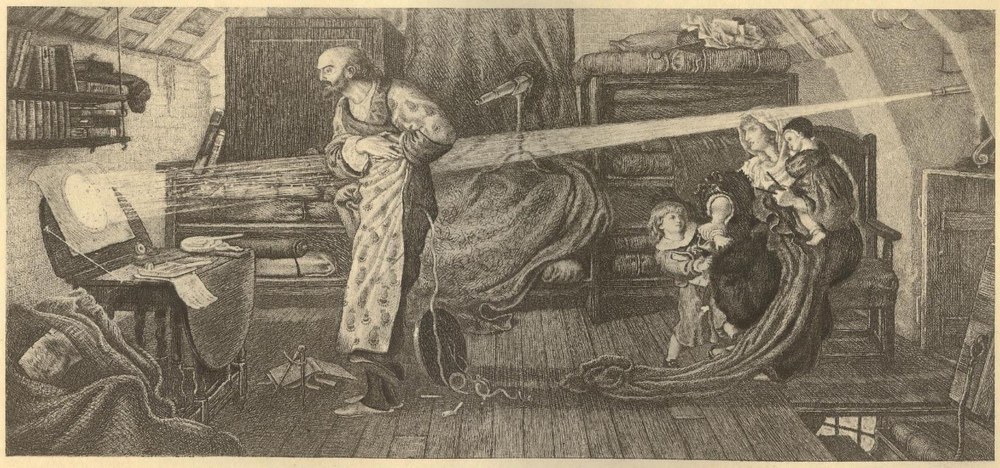
"Essays in Astronomy" – D. Appleton & Company, 1900 (Library of Congress LCCN 00004435)
The use of eyepiece solar filters is strongly discouraged. These filters quickly overheat due to concentrated solar radiation and can suddenly crack, causing irreparable eye damage. Unfortunately, eyepiece filters still occasionally appear as accessories supplied with inexpensive telescopes. If you have one, discard it immediately. A safe, proven and traditional method of observing the Sun – commonly practised at public observatories – is the projection of the solar image onto a white surface.
This has the practical advantage of allowing everyone present to safely view the spectacle simultaneously. However, care should be taken to avoid positioning yourself in the optical path between the eyepiece and projection surface, and to securely cover viewfinders with parallel beam paths, especially in windy conditions. Weather permitting, the Cologne Public Observatory will open on eclipse Saturday from 11:00 to 13:00 (local time), allowing visitors the opportunity to safely and professionally observe the partial solar eclipse from the rooftop of the Schiller-Gymnasium.
Observers in Iceland and Greenland will have the best viewing conditions – assuming the skies remain clear. Several livestreams are planned, which should provide a clear view of the celestial event, allowing everyone to experience the eclipse remotely in case cloudy conditions prevail here.
An extraordinary, rare eclipse
Finally, let us take a brief look ahead to the next solar eclipse in Saros cycle 149 – one of the exceedingly rare decentralised total eclipses. Typically, total solar eclipses are central: meaning the centre line – the axis of the Moon’s cone-shaped umbra – touches Earth's surface and moves rapidly along a path thousands of kilometres long, crossing continents and oceans. In very rare instances, however, the centre line narrowly misses Earth, yet our planet is still grazed by the edge of the umbral shadow cone and briefly experiences totality.
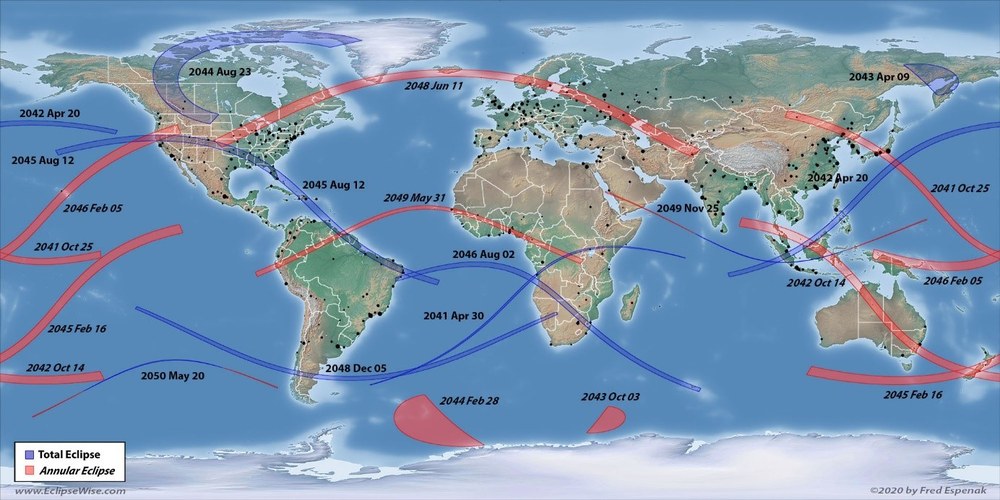
Eclipse Predictions by Fred Espenak, www.EclipseWise.com
For geometric reasons, such decentralised total eclipses occur exclusively in small, high northern or southern regions at sunrise or sunset. The last such eclipse occurred on 2 November 1967 over the Southern Ocean, and the next one will occur on 1 June 2459 near Enderby Land in Antarctica. Observers in the northern hemisphere, however, must wait until the fourth millennium to witness another decentralised total eclipse occurring at high northern latitudes.
Related links
Tags:
